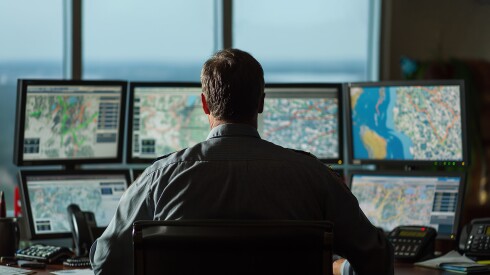-
The purchase of CloudGavel promises to give Tyler more software for electronic warrants — which can improve safety and speed. Tyler and other vendors are counting on public safety for even more growth.
-
The small mountain town of Vail, Colo., has introduced agentic AI tools to aid in fire detection, public engagement and other areas. Being more efficient with mundane, everyday tasks is a key focus.
-
The new funding round follows the recent acquisition by the company of a Canada-based emergency communications tech provider. RapidSOS has raised more than $450 million since its launch in 2012.
More Stories
-
BRINC and SkySafe will work with the tech giant to provide better drone operations for first responders, reflecting a larger trend in government. BRINC also says it has raised $75 million in a new funding round.
-
Robots offer potential for public safety, but state governments — working with a big name in robotics — are grappling with how to regulate them, especially as the prospect of weaponization raises urgent concerns.
-
Drones are quickly taking on more roles in law enforcement, disaster management and other tasks. Their latest role is arriving at emergency situations before humans do, collecting information for police.
-
Moving to Next-Gen 911 is more than just a technical challenge; it's a moral imperative as public safety agencies work to meet the needs of all Americans, including those with disabilities or language barriers, during emergencies.
-
The county's Community Emergency Response Team program originally formed after 9/11 but had since faded. In this new iteration, 14 team members are trained in a variety of scenarios, including disaster preparedness and fire safety.
-
Gov. Greg Abbott announced the debut Wednesday of the Naloxone Distribution Interactive Map, which shows where to get the opioid overdose-reversing drug. The state required tracking of overdoses starting in late 2023.
-
Starting June 1, any phone number with a Denver billing address will see an increased fee that will go toward speeding the time it takes to answer 911 calls, which has lagged in the city largely due to staffing issues.
-
Minnesota wants widespread roadside drug testing, but pilot data reveals key limitations and practicality concerns agencies must consider. Government Technology broke down the data within "spit" test discrepancies.
-
EMS providers and legislators warn that Gov. Lamont's proposed cuts to Medicaid reimbursements could result in understaffing and delays in critical care, especially for rural and underserved communities.
-
The city's new program sends trained, unarmed ambassadors to assist police in carrying out low-risk tasks, like directing traffic at accident scenes, and allows officers to focus on crime and public safety emergencies.
-
The public safety technology firm has partnered with home security company Arlo to provide more video data to first responders. The service could speed up responses and reduce false alarms.
-
The funding is part of $37 million statewide from the Fire Company and Emergency Medical Services Grant Program, meant for equipment purchases, training, facility upgrades and other operational costs.
-
Proposed legislation would put 911 call takers, currently classified as "clerical workers," in the same category as police officers, firefighters and corrections officers in the New Mexico Public Employees Retirement Act.
-
As some public safety agencies are experiencing more flexibility and speed in getting waivers from the Federal Aviation Administration for advanced drone programs, experts predict the use of UAS to rapidly rise.
-
The facility allows firefighters to practice in live-burn simulations, which department leadership said helps them better respond to emergencies. The project was funded by a half-percent public safety sales tax initiative.
-
The bipartisan bill would establish a dedicated mental health hotline for police, fire and EMS workers to provide support, information, intervention and substance use resources.
-
The deal comes as emergency communications and dispatch technology offers more real-time data and mapping tools, among other advances. RapidDeploy launched in 2013 and has raised more than $80 million in funding.
-
A study finds that compensation for police, fire and emergency medical services workers, among other positions, in Virginia Beach, Va., is 5 to 10 percent lower than comparable jurisdictions.
Most Read
- The State of the 2025 Cyber Workforce: Skills Gaps, AI Opportunity and Economic Strain
- Can AI Teletherapy Turn the Tide on Teacher Burnout?
- Are young people confident that AI will improve their job prospects?
- Opinion: AI in K-12 Schools — 5 Moves Only Leaders Can Make
- Responsible Data Center Builds for State, Local Government





























